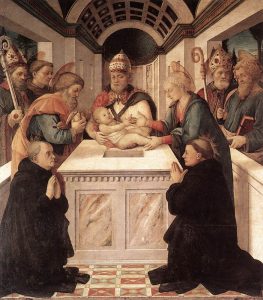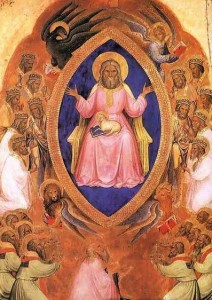 Today is the octave day of Christmas and the liturgical observance of the Lord receiving circumcision according to the Law of Moses. In the West, various saints and liturgical texts attest to this feast as being in existence early in our Church history. We know that the local Council of Tours (AD 567) prescribed this feast. By the eighth century the Byzantine Church put the Circumcision on the calendar.
Today is the octave day of Christmas and the liturgical observance of the Lord receiving circumcision according to the Law of Moses. In the West, various saints and liturgical texts attest to this feast as being in existence early in our Church history. We know that the local Council of Tours (AD 567) prescribed this feast. By the eighth century the Byzantine Church put the Circumcision on the calendar.
In the Torah all Jewish males are required to follow this first legal observance. In sacred Scripture we read:
This is my covenant which you shall observe between me and you, and thy seed after thee: All the male-kind of you shall be circumcised. And you shall circumcise the flesh of your foreskin, that it may be for a sign of the covenant between me and you. An infant of eight days old shall be circumcised among you, every manchild in your generations: he that is born in the house, as well as the bought servant, shall be circumcised (Genesis 17:10-12).
Scholars will speak of circumcision as a sacrament of the former dispensation; it is an Old Testament type for Catholic sacramentality. Following the line of thinking of Saint Hilary of Poiters, Jesus had no need for circumcision but that we need this act of conforming to the Law of God. Jesus was circumcised so that He might redeem those who were under the law. Thus, after the Incarnation, the Lord’s circumcision was the initial gesture that freed us from the Mosaic Law opening the door to sacrament of Baptism granting forgiveness of Original Sin, becoming adopted sons and daughters of God, and becoming members of the Church (Cf. Gal. 4:5). The Lord demonstrates that Baptism is necessary for salvation. This physical act is the Lord’s first shedding of blood for the new covenant.
Also central to today’s Liturgy is Mary’s following of the Divine command to name her infant son, Jesus (meaning: God saves). The Archangel Gabriel specified the name of the Incarnate Word of God and Mary and Joseph follow what was revealed. Thus, we honor the Holy Name of Jesus (a fuller liturgical observance will be on January 3).
Let us pray. Almighty God, whose only-begotten Son on this day received bodily circumcision, lest He should break the law which He came to fulfil, purify your minds by spiritual circumcision from every allurement of vice, and pour into you his own blessing. Amen.


